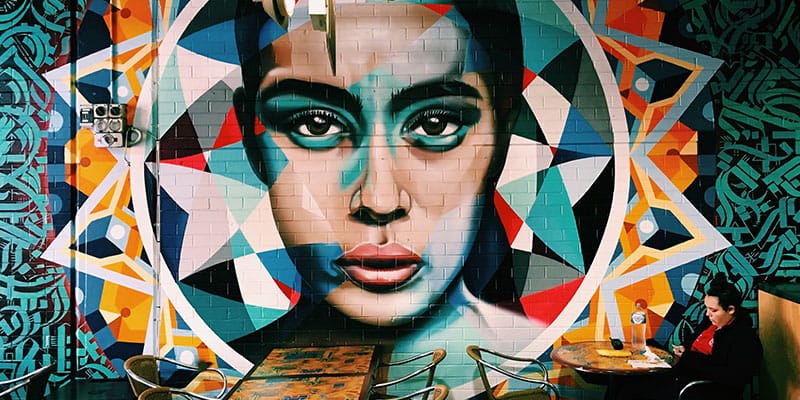Grow your business with the Discover newsletter
Logistics advice & insights straight to your inbox
Subscribe now
FTSE listed corporations, such as EY, Ford, Hewlett Packard Enterprise (HPE) and Microsoft, have reported large productivity gains since transforming their HR programs to make recruiting neurodiverse talent easier. In an increasingly competitive world, it makes sense to learn how seeking a more neurodiverse workforce could improve your bottom line.
The creative industries have long been aware that hiring too many of the same types of people can stop them from reaching their full potential. After all, if you’re paid to come up with an endless and entertaining stream of new and different ideas for TV, film and advertising, you need to make sure your thinking is always fresh. ‘Neurodiversity’ is defined as the variation in the way our brains and minds work – just like the more visible differences between people such as ethnic, cultural, religious or sexual diversity. However, this shouldn't be confused with 'cognitive diversity', which recognizes the positive value of bringing people together who approach work from differing perspectives.


We perhaps expect this appetite for diversity in the creative industries. More surprising is that recently, more mainstream corporations, such as EY, Ford, Hewlett Packard Enterprise (HPE) and Microsoft, have transformed their HR programs to make it easier to access neurodivergent talent.
Ed Thompson, founder and director at Uptimize, an organization that helps corporations attract and leverage neurodiverse talent, thinks that people have to start seeing neurodiversity within the wider inclusion debate. Thompson says, “There’s been a big change in the last five to 10 years, where diversity as a whole has gone from a CSR initiative to a business imperative. These days, if you read the annual reports of Fortune 500 organizations they are now stating inclusivity and diversity as absolutely key business priorities.”
German cloud software company SAP SE – listed on the FTSE 350 – launched an Autism at Work program to widen the pool of new applicants. Anka Wittenberg, Chief Diversity & Inclusion Officer at SAP said, “SAP focuses on having scalable HR processes; however, if we were to use the same processes for everyone, we would miss people with autism.”
The company reports examples of neurodivergent employees participating on teams that generated significant innovations, including someone who helped develop a technical fix worth an estimated US$40m in savings – proving that having more neurodiversity within the company is great for business. It also established a ‘soft skills’ module to help candidates who have never worked in a professional environment learn about expectations in the workplace.
Mike Tozer, the founder of Xceptional, a digital product testing company employing (almost exclusively) people with autism, launched his company to give neurodivergent developers and testers a better shot at landing long-term roles.
In response to formal face-to-face job interview processes that are largely stacked in the favor of neurotypical people, Xceptional developed its own innovative training course that uses online activities to determine which candidates are best suited for software testing. The program includes both presentation material and practical testing activities of increasing complexity, allowing candidates to show their strengths rather than having to struggle through an interview where they may be likely to under-perform.

“At Xceptional we recognize the unique strengths of people on the autism spectrum, such as enhanced pattern recognition, sustained concentration and precision are often overlooked. We see the world differently,” says Mike Tozer.
Professor Amanda Kirby, the CEO of neurodiversity consultancy Do-IT Profiler, developed a range of tools to help employers demystify various elements of neurodiversity in the workplace. They offer a service that audits company materials, such as websites and job specifications to make sure that they are neurodivergent-friendly, and then help implement any recommendations. She says, “I would like to see better lines of communication opening up within companies, so that more employees feel more comfortable regarding the disclosure of neurodivergence.”
Wayne Deakin, Executive Creative Director at digital agency Huge London, is autistic. He’s open and vocal about his neurodiverse condition: “Obviously, I can’t speak for everyone on the spectrum. However, being autistic has helped me create award-winning work and disruptive innovations that brought crazy financial returns for clients. It has helped me be good at my craft and look sideways at problem-solving.”
It’s often the ability to see a problem from a less obvious angle that makes successful neurodiverse professionals stand out. As Pip Jamieson, the founder of creative network service The Dots, has found, that can also be beneficial in business. She says, “One of the reasons so many successful entrepreneurs are dyslexic is we’re highly creative. Crucially, creativity is the skill set that is least susceptible to automation. A recent study by NESTA and Oxford University found that 86% of 'highly creative' workers are found to be at low or no risk of automation. While the same study found that creative occupations are more future-proof to technologies like machine learning and mobile robotics.” She has five top tips for promoting neurodiversity and enhancing creativity:

1. Build cultures which allow people to bring their ‘whole self’ to work.
2. Embrace the role of media and creativity as an engine of change.
3. Bridge the gap between policy and practice.
4. Redefine what it means to be a role model.
5. Stop defining people by what they can’t do.
Investment bank JPMorgan Chase recently expanded their Autism at Work Program, launched in 2015, by improving their interviewing techniques to recruit strong talent. They have also introduced more training for managers and neurotypical colleagues to help any new neurodivergent colleagues to shine.
James Mahoney, Executive Director and Head of Autism at Work at JPMorgan Chase, said, “Through the program, we’re developing better career paths for graduates with autism spectrum disorder. ... We began a pilot program in 2015 with four people, and it has since grown to dozens of individuals across five countries in a variety of roles across the firm. Our aim is to expand to several hundred people by 2020.”
The first thing to remember is that employees may not disclose – or even realize – that they are neurodivergent, but managers should still be able to take steps to understand every employee’s strengths and challenges. Neurodivergent employees won’t necessarily immediately pick up on the ‘unwritten rules’ and conventions of your company, especially if they are autistic or have Asperger’s.
HR departments and line managers should be aware of workplace issues that can mean that highly talented, but neurodivergent, employees miss out on opportunities for career progression. Some common reasons for this range from senior staff wrongly believing neurodivergent employees will not make effective managers, to challenges with self-confidence and self-advocacy from the employee themselves. Again, this can be common in people with autism or Asperger’s.
Problem – bright office lights can be distracting and can contribute to sensory overload.
Solution – neurodivergent employees could be given a work space away from bright artificial lights and closer to more natural light.
Problem – noisy, open plan environments can also be highly distracting.
Solution – HR can assign neurodivergent employees a desk in a quieter area, or even a private office, and allow the use of headphones or earplugs.
Problem – computer screens can be too bright and desks may lack items to aid personal organization, such as trays and filing drawers.
Solution – providing programs that decrease screen brightness, desk filing trays and organizational apps are simple, cost-effective accommodations that can make a huge difference to the quality of someone’s working life.

Neurodiversity: the biological reality of infinite variation in human neurocognitive functioning and behavior. The term is now also being used to describe the fast-emerging sub-category of workplace HR that focuses on diversity and the inclusion of people who are neurodivergent.
Cognitive diversity: the encouragement of different ways of thinking, information processing, work approaches and other cognitive abilities – recognizing the positive value in bringing people together who approach tasks in hand from differing perspectives.
Neurodivergent: having cognitive functioning different from what is seen as ‘normal’. This can be entirely genetic or innate, such as dyslexia, but some forms of neurodivergence can be acquired, such as via brain injury.
Neurodivergence: the state of being neurodivergent.
Neurodiverse: a group can be neurodiverse – a person is better described as neurodivergent.
Neurotypical: biologically speaking there is no such thing as a ‘normal’ brain, neurotypical is best thought of as ‘not neurodivergent’, i.e. within parameters of neurocognition that have not been either medically defined as ‘disorders’ or culturally defined as ‘neurodivergent’.
Neurominority: a group such as autistic people or dyslexic people, defined by sharing a similar form of innate neurodivergence – there can be great variety within each neurominority demographic.